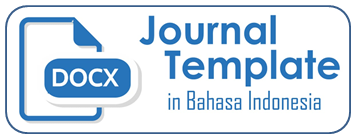Analisis Kualitas Air Sumur Bor di Kel. Makarti Jaya Kec. Makarti Jaya Kab. Banyuasin
DOI:
https://doi.org/10.32524/jksp.v8i2.1592Keywords:
Analysis, Quality, Water Drill WellAbstract
In 2022, there are still 35.3 million people in Indonesia who do not have access to clean and decent water. One of the efforts made to meet the needs of clean water for the community is to build drilled well facilities. Drilled wells need attention, because they are susceptible to pollution seepage of human and animal manure and domestic household use. This study is quantitative descriptive with a population of 14 drilled wells in Makarti Jaya Village, Banyuasin Regency in May 2024 using the Purposive Sampling technique. The data analysis used in this study is univariate. The results showed that the iron (Fe) content was 13 out of 15 samples that did not meet the quality standards, the pH of the water was 13 out of 14 samples that did not meet the quality standards, the turbidity of the water was 9 out of 14 samples that did not meet the quality standards, the smell of water was 13 out of 14 samples that did not meet the quality standards, and the color was 100% not meeting the quality standards according to the standards of the Minister of Health of the Republic of Indonesia No. 2 of 2023. It was concluded from the 14 borewell water samples tested that there was no well water that was suitable for daily use based on the Indonesian Minister of Health Regulation No. 2 of 2023. It is recommended that the local government/related agencies can provide socialization about the location of the well so that it is not too close to the source of pollution. And it can also work with local environmental health agencies to provide water filters and distribute tohort lime to neutralize pH levels.
References
Aji, W. (2021). Kualitas Air Bersih Pada Sumur Bor Di Desa Sumber Rejo KabupatenBanyuasin Tahun 2021
BPS. (2023). Statistik Air Bersih 2018—2022. 2023. diakses dari: https://www.bps.go.id/id/publication/20 23/12/21/50f9fbfde6afcd854de1cc5e/s tatistik-air-bersih-2018-2022.html
Chandra, B., (2007). Pengantar Kesehatan Lingkungan. Penerbit Buku Kedokteran EGC
Djana, M. (2023). Analisis Kualitas Air Dalam Pemenuhan Kebutuhan Air Bersih Di Kecamatan Natar Hajimena Lampung Selatan. Jurnal Redoks, 8(1), 81–87.
Febrina, L., Ayuna, A., (2014). Studi Penurunan Kadar Besi (Fe) Dan Mangan (Mn) Dalam Air Tanah Menggunakan Saringan Keraamik. Jurnal Teknologi Universitas Muhamadiyah Jakarta. 7 (1).
Fahimah, N., Salami, I., Oginawati,& K., Thaher, Y. (2023). Variations Of Groundwater Turbidity In The Bandung Regency, Indonesia: From Community- Used Water Quality Monitoring Data. Hydroresearch. 6, 216-227.
Khoiriah, N., Mutholib, A., (2021). Gambaran Kadar Besi (Fe) Pada Air Perumahan Industri Di Baturaja Kabupaten Ogan Komering Ulu. Journal Of Medical Laboratory And Science. 1(1).
Lai, Y., Zhang, J., Li, W., Song, W.., (2024).
Water Quality Monitoring Of Large Reservoirs In China Based On Water Color Change From 1999 To 2021. Journal of hydrology.
Mavaluru, D., Siva Malar, R., Dharmarajlu,
S. M., Priya Lovelin Auguskani, J., & Chellathurai, A. (2024). Deep Hierarchical Cluster Analysis For Assessing TheWater Quality Indicators For Sustainable Groundwater. Groundwater For Sustainable Development, 25,
Oxyandi, M., Fatriansari, A., & Pranata, L. (2025). Contemporary Health: Navigating Modern Challenges And Innovations In Global Healthcare Systems. Jurnal Ilmu Psikologi dan Kesehatan (SIKONTAN), 3(4), 199-208.
Permenkes RI. (2010). Peraturan Menteri Kesehatan Republik Indonesia Nomor 492/Menkes/Per/Iv/2010 Tentang Persyaratan Kualitas Air Minum. KemenkesRI
Permenkes RI. (2017). Peraturan Menteri Kesehatan No. 32 Tahun 2017 Tentang Standar Baku Mutu Kesehatan Lingkungan Dan Persyaratan Kesehatan Air Untuk Keperluan Higiene Sanitasi, Kolam Renang, Solus Per Aqua, Dan Pemandian Umum. Kemenkes RI
Permenkes RI. (2019). Peraturan Menteri Kesehatan No.28 Tahun 2019 Tentang Angka Kecukupan Gizi Yang Dianjurkan Untuk Masyarakat Indonesia. Kemenkes RI
Permenkes RI. (2023). Peraturan Menteri Kesehatan No. 32 Tahun 2017 Tentang Peraturan Pelaksanaan Peraturan Pemerintah Nomor 66 Tahun 2014 Tentang Kesehatan Lingkungan. Kemenkes RI
Profil UPT Puskesmas Makarti Jaya Tahun 2023
Portal Informasi Indonesia. (2023). Bersiap Meningkatkan Akses Air Bersih.
Sari, M., Huljana, M., (2019). Analisis Bau, Warna, TDS, pH, dan Salinitas Air Sumur Gali di Tempat Pembuangan Akhir. Jurnal Ilmu Kimia dan Terapan. 3(1)
Pranata, L., Kurniawan, I., Indaryati, S., Rini, M. T., Suryani, K., & Yuniarti, E. (2021). Pelatihan pengolahan sampah organik dengan metode eco enzym. Indonesian Journal Of Community Service, 1(1), 171-179.
Rosyidah, M., Azizah, M., & Pranata, L. (2025). Pemanfaatan Sumber Daya Lingkungan sebagai Bagian dari Implementasi Teknologi Green Manufacturing. ASPIRASI: Publikasi Hasil Pengabdian dan Kegiatan Masyarakat, 3(1), 95-99.
Sugiyono. (2017). Statistika Untuk Penelitian. Alfabeta.
WHO. (2020.). Water, Sanition, And Hygine (WASH).
WHO. (2022). Water, Sanitation And Hygiene (WASH).
Wu, Y., Zhang, P., Lu, J., Xu, H., Zhang, W., Yu, W., & Jiang, G. (2024). Fe
Electrocoagulation Technology For Effective Removal Of Molybdate From Water: Main Influencing Factors, Response Surface Optimization, And
Xu, Li, (2024). Biogeochemical Mechanisms Of Iron (Fe) And Manganese (Mn) In Groundwater And Soil Profiles In The Zhongning Section Of The Weining Plain (Northwest China). Science Of The Total Environment. 939. 173506. Https://Doi.Org/10.1016/J.Scitotenv.20 24.173506
Zhong, Lao, Tan, Yu, Liu, Liang (2022). Synthesis Of Coni-Layered Double Hydroxide On Graphene Oxide As Adsorbent And Construction Of Detection Method For Taste And Odor
Downloads
Published
How to Cite
Issue
Section
License
Copyright (c) 2025 Jurnal Kesehatan Saelmakers PERDANA (JKSP)

This work is licensed under a Creative Commons Attribution-ShareAlike 4.0 International License.













